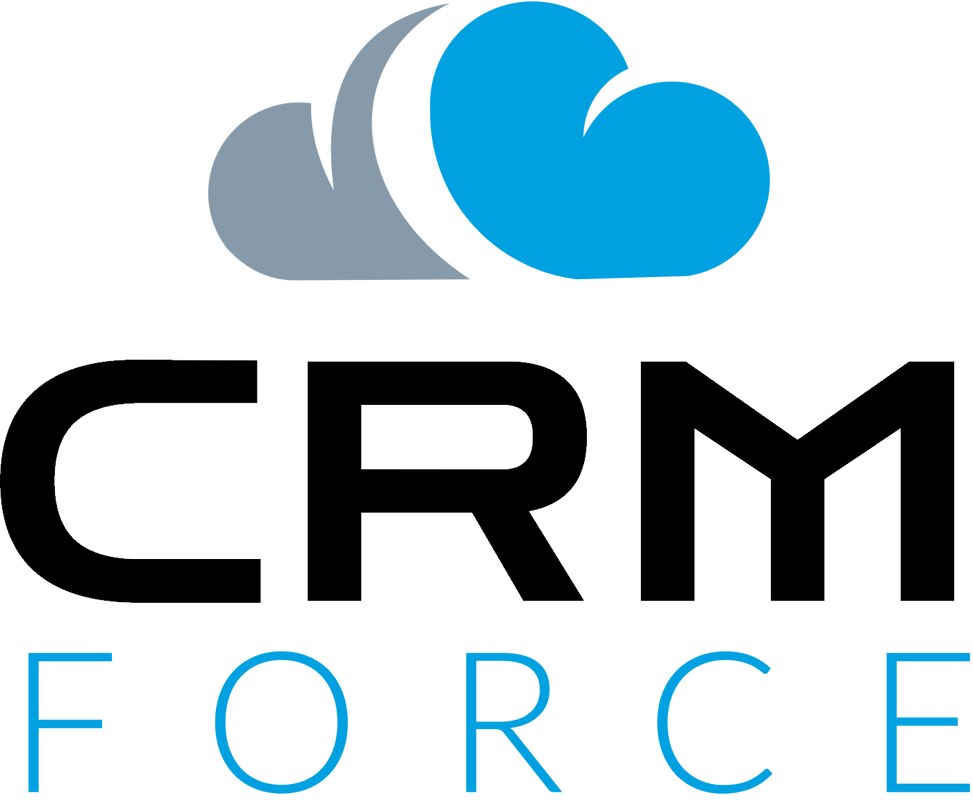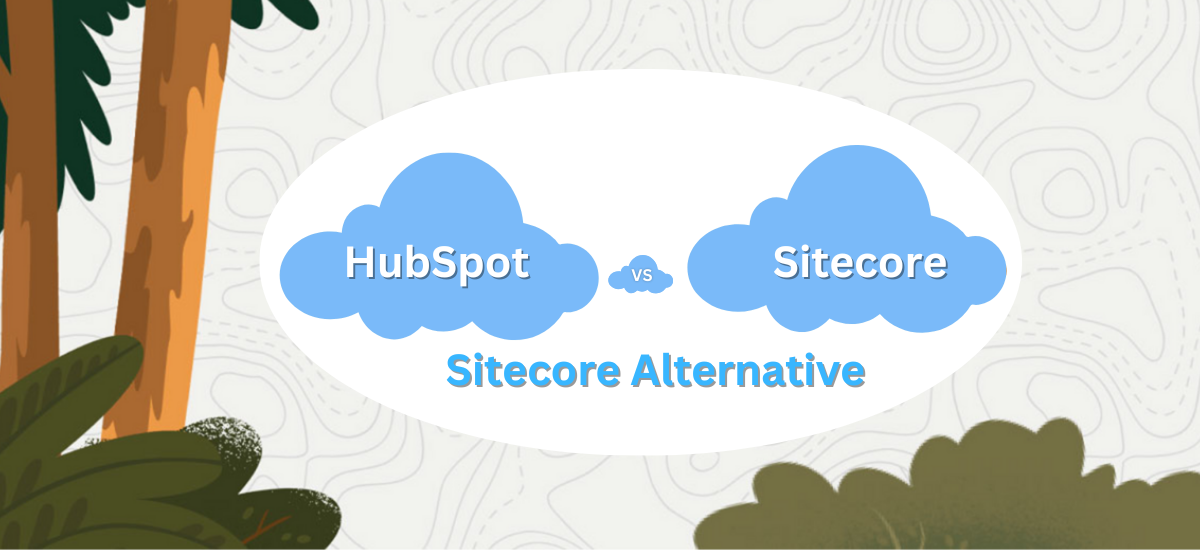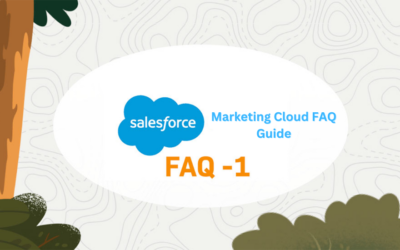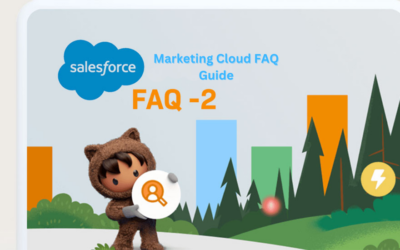In the rapidly evolving landscape of digital experience management, the choice of a Content Management System (CMS) plays a pivotal role in shaping a business’s online presence and engagement. This comprehensive guide aims to unravel the complexities surrounding two prominent CMS platforms, HubSpot and Sitecore, offering an in-depth exploration of their features, strengths, limitations, and real-world applications. By scrutinizing the distinctive attributes of HubSpot and Sitecore, businesses can make informed decisions tailored to their specific needs, whether they prioritize user-friendly marketing automation or demand enterprise-level digital experience management. Beyond this comparative analysis, we delve into the pivotal decision-making factors such as budget considerations, scalability, and user-friendliness, empowering businesses to align their CMS choices with strategic objectives.
As businesses navigate the digital landscape, the quest for the ideal Sitecore alternative emerges as a crucial aspect of this guide. Understanding the limitations of Sitecore, ranging from its potential learning curve to the associated costs, sets the stage for exploring alternatives that better suit diverse business requirements. This section provides a roadmap for businesses in search of alternatives, introducing two specific options with detailed insights into their features, pricing models, and user feedback. Armed with a checklist for evaluating alternatives and guidance on vendor consultations and trial periods, businesses gain the tools needed to make well-informed decisions. The ultimate goal is to guide businesses through the intricate process of selecting a CMS that not only addresses current challenges but also sets the stage for future digital success. If you need assistance with Salesforce CRM setup and optimization, companies like CRM Force can provide valuable expertise and support.
1- HubSpot Unveiled:
A- Overview of HubSpot
I- HubSpot’s Core Features: HubSpot is an all-in-one inbound marketing, sales, and customer service platform known for its versatile features.
Content Management System (CMS): HubSpot’s CMS is user-friendly, allowing users to create and manage content effortlessly. Its drag-and-drop editor, customizable templates, and media library simplify content creation and organization.
Marketing Automation: One of HubSpot’s standout features is its robust marketing automation capabilities. It enables businesses to automate repetitive tasks, nurture leads, and execute sophisticated marketing campaigns seamlessly.
Customer Relationship Management (CRM): HubSpot’s CRM integrates seamlessly with its marketing and sales tools, providing a centralized hub for managing customer interactions. This unified approach helps businesses build and maintain strong customer relationships.
Sales Tools: HubSpot offers a suite of sales tools, including lead tracking, email tracking, and pipeline management. These tools empower sales teams to streamline their processes and close deals more efficiently.
Analytics and Reporting: The platform provides comprehensive analytics and reporting tools, allowing users to track the performance of their marketing and sales efforts. This data-driven approach enables businesses to make informed decisions and optimize their strategies.
II- User-Friendly Interface:
HubSpot’s interface is designed with simplicity and functionality in mind.
Intuitive Dashboard: The dashboard provides a centralized view of essential metrics and tools, making it easy for users to navigate between different modules, campaigns, and analytics.
Accessibility for Beginners: HubSpot’s user-friendly design caters to users with varying levels of technical expertise, making it accessible for beginners without sacrificing functionality for more advanced users.
III- Marketing Automation Capabilities:
HubSpot’s marketing automation is a key driver of its popularity.
Lead Nurturing: Businesses can create automated workflows for lead nurturing, ensuring that leads receive targeted content at different stages of the buyer’s journey.
Email Marketing Automation: HubSpot allows for the automation of email marketing campaigns, from sending personalized emails to tracking engagement and adjusting strategies based on recipient behavior.
IV- Integration and Scalability:
HubSpot’s ecosystem is designed to integrate seamlessly with a wide range of third-party applications.
App Marketplace: The HubSpot App Marketplace offers a diverse array of integrations, allowing businesses to connect HubSpot with tools such as CRMs, analytics platforms, and e-commerce solutions.
Scalability: HubSpot caters to businesses of all sizes. Its modular structure allows users to start with basic features and scale up as their needs grow, making it suitable for startups and enterprises alike.
B-Pros and Cons of HubSpot
I- Strengths:
HubSpot’s strengths contribute to its popularity among businesses of various sizes.
Comprehensive All-in-One Solution: HubSpot’s integrated approach as an all-in-one solution for marketing, sales, and customer service streamlines processes, reduces the need for multiple tools and fosters collaboration across teams.
Robust Support and Community: HubSpot offers extensive support resources, including documentation, webinars, and a vibrant community forum. The availability of resources ensures that users can find help when needed.
Continuous Updates and Improvements: HubSpot consistently updates its platform with new features and improvements, ensuring that users have access to the latest tools and technologies in the rapidly evolving digital landscape.
II- Limitations:
While HubSpot excels in many areas, there are certain limitations that users should be aware of.
Cost for Advanced Features: Access to some advanced features, especially in the marketing and sales hubs, may come at an additional cost. Businesses with specific needs may find themselves on higher-tier plans to unlock these capabilities.
Learning Curve for Advanced Features: While the basic features are user-friendly, mastering advanced functionalities may require a learning curve. Training and familiarization with the platform are essential for extracting the full benefits.
III- Real-Life Success Stories:
Highlighting real-life success stories demonstrates HubSpot’s effectiveness in diverse business scenarios.
Case Studies: Showcase examples of businesses that have achieved notable success using HubSpot. This could include improvements in lead generation, sales growth, or customer satisfaction.
Testimonials: Include customer testimonials that provide insights into how businesses have leveraged HubSpot to overcome challenges and achieve their marketing and sales objectives.
This detailed exploration of HubSpot’s core features, user interface, marketing automation capabilities, integration options, strengths, limitations, and real-life success stories provides a comprehensive understanding of what the platform offers to businesses seeking a versatile and integrated solution for their marketing and sales needs.
2- Sitecore Explored:
A- Deep Dive into Sitecore
I- Sitecore’s Comprehensive Suite:
Sitecore stands out for its feature-rich and comprehensive suite, offering more than a traditional CMS.
Digital Experience Management: Sitecore goes beyond content management, focusing on digital experience management. This includes personalization, A/B testing, and optimization tools to enhance the overall user experience.
E-commerce Capabilities: Sitecore’s e-commerce features make it a compelling choice for businesses looking to manage online transactions seamlessly. It provides tools for product catalog management, order processing, and personalized shopping experiences.
Personalization and Customer Experience: Sitecore’s emphasis on personalization allows businesses to tailor content based on user behavior and preferences. This leads to a more engaging and relevant customer experience across various touchpoints.
Advanced Analytics and Reporting: Sitecore’s analytics and reporting tools provide deep insights into user interactions with content. From tracking page views to analyzing user journeys, businesses gain valuable data to refine their content strategy.
Multilingual and Multisite Capabilities: Multinational and multisite organizations benefit from Sitecore’s ability to manage content in multiple languages and across various websites. This is crucial for maintaining a consistent brand image globally.
II- Evaluating Sitecore’s Pros and Cons:
Understanding the strengths and limitations of Sitecore is crucial for businesses considering its adoption.
Advantages: Sitecore’s strengths lie in its scalability, enterprise-level capabilities, and flexibility for customization. Its modular architecture allows businesses to tailor the platform to their specific needs.
Challenges: Sitecore’s challenges may include a steeper learning curve, higher upfront costs, and potentially complex implementations. However, businesses with sophisticated digital experience requirements often find these challenges acceptable in light of the platform’s advanced features.
III- Noteworthy Use Cases:
Examining real-world use cases showcases Sitecore’s effectiveness in different business scenarios.
Industry-Specific Success Stories: Highlight examples of businesses within specific industries that have successfully leveraged Sitecore. These could include instances where personalization, analytics, and multilingual capabilities played a pivotal role.
Customization for Unique Requirements: Showcase instances where Sitecore’s flexibility allowed businesses to address unique requirements and challenges, emphasizing its adaptability across diverse industries.
This detailed exploration of Sitecore’s extensive suite, e-commerce capabilities, focus on personalization, advanced analytics, and multilingual/multisite features provides businesses with a thorough understanding of how the platform goes beyond a traditional CMS. It sets the stage for a nuanced comparison with HubSpot in the subsequent sections, helping businesses make informed decisions based on their specific needs and objectives.
3- HubSpot vs Sitecore: Head-to-Head Comparison:
A- Key Differences in Features:
I- Content Management Capabilities:
HubSpot:
Emphasizes simplicity and user-friendliness in content creation and management.
Ideal for businesses with straightforward content needs and a focus on ease of use.
Sitecore:
Offers advanced content management capabilities suitable for complex enterprise requirements. Provides robust tools for content personalization, versioning, and workflow management.
II- E-commerce Integration:
HubSpot: Provides basic e-commerce functionality suitable for small to medium-sized businesses. Integrates with popular e-commerce platforms but may lack advanced features.
Sitecore: Excels in e-commerce with advanced features for managing product catalogs, personalized shopping experiences, and order processing.
Ideal for businesses with substantial online sales components.
III- SEO-Friendliness:
HubSpot: Offers SEO tools for on-page optimization, keyword tracking, and content suggestions. Suitable for businesses focused on inbound marketing and organic search.
Sitecore: Provides robust SEO capabilities, including customizable URL structures, metadata management, and XML sitemaps.
Ideal for enterprises with a strong emphasis on global and localized SEO strategies.
IV- Pricing Models:
HubSpot: Utilizes a subscription-based pricing model with tiered plans based on features and user limits. Generally more accessible for small to medium-sized businesses with scalable options.
Sitecore: Adopts a custom pricing approach based on enterprise requirements. May involve higher upfront costs, making it more suitable for large enterprises with extensive digital experience needs.
B- Case Studies: Industries Best Suited for HubSpot and Sitecore:
HubSpot: Highlight industries like startups, small to medium-sized businesses, and those with a primary focus on inbound marketing and lead generation. Showcase success stories where the simplicity and integrated nature of HubSpot’s features have driven tangible results.
Sitecore: Illustrate industries with complex digital experience requirements, such as large enterprises in e-commerce, finance, or healthcare. Showcase instances where Sitecore’s advanced capabilities, personalization features, and scalability have significantly benefited businesses.
4- Factors Influencing the Decision-Making Process:
A- Budget Considerations:
I- Upfront Costs:
HubSpot: Generally has lower upfront costs, making it more accessible for businesses with limited budgets. Offers a clear pricing structure with transparent tiered plans.
Sitecore: Involves higher upfront costs, especially for enterprise-level implementations. Custom pricing may require businesses to align their budget with specific digital experience requirements.
II- Long-Term Expenses:
HubSpot: Ongoing expenses are often more predictable due to standardized pricing plans. Businesses can scale their usage based on needs, adjusting costs accordingly.
Sitecore: This may have higher long-term expenses, especially with the potential need for customization and additional features. Large enterprises with evolving digital experience requirements may find the investment justified.
B- Business Goals and Scalability:
I- Small to Medium Enterprises:
HubSpot: Well-suited for small to medium-sized businesses with straightforward content and marketing needs. Offers a scalable solution that allows businesses to start with basic features and upgrade as they grow.
Sitecore: This may be overly complex for smaller enterprises with limited digital experience requirements. Best suited for larger businesses with a focus on advanced digital experience management.
II- Large Corporations and Enterprises:
HubSpot: Can cater to the needs of larger enterprises, especially those focused on inbound marketing and lead generation. Offers scalability, but businesses may hit limitations with more advanced requirements.
Sitecore: Tailored for large corporations with complex digital experience needs, multiple websites, and extensive e-commerce functionalities. Provides the flexibility and scalability required by enterprise-level businesses.
C- User-Friendliness and Training Requirements:
I- Ease of Use:
HubSpot: Known for its user-friendly interface, making it accessible to users with varying levels of technical expertise. Features a simple and intuitive dashboard for easy navigation.
Sitecore: Has a steeper learning curve due to its advanced features and customization options. May require more extensive training for users to maximize its capabilities.
II- Learning Curve:
HubSpot: Users can quickly adapt to HubSpot’s straightforward features, reducing the learning curve. Extensive resources, documentation, and community support are available for ongoing learning.
Sitecore: Requires a more significant investment in training and resources to master its advanced functionalities. Businesses should plan for comprehensive onboarding to ensure effective use of the platform.
This detailed examination of budget considerations, business goals, scalability, and user-friendliness provides businesses with a comprehensive guide for weighing the pros and cons of HubSpot and Sitecore. By understanding these factors, businesses can align their CMS choice with their unique requirements and strategic objectives.
5- The Hunt for the Ideal Sitecore Alternative:
A- Understanding the Need for Alternatives:
I- Limitations of Sitecore:
Complexity and Learning Curve: Sitecore’s advanced features and customization options may lead to a steeper learning curve for users. Businesses with limited resources or a preference for a simpler solution may seek alternatives.
Cost Considerations: The higher upfront costs and potentially significant ongoing expenses associated with Sitecore may prompt businesses to explore alternatives that offer a more budget-friendly approach.
II- Diverse Business Requirements:
Specific Feature Needs: Some businesses may have specific feature requirements that Sitecore does not fully address. The search for alternatives may stem from the need for features that align more closely with their unique business objectives.
Scalability Concerns: Businesses experiencing challenges with Sitecore’s scalability or finding it overkill for their current needs may seek alternatives that provide a better fit for their growth trajectory.
B- Exploring Potential Alternatives:
Features and Capabilities: Detail the features and capabilities of the first alternative, emphasizing areas where it excels compared to Sitecore. Discuss how the alternative addresses specific limitations or challenges faced by businesses considering a switch from Sitecore.
Pricing Structure: Provide insights into the pricing model of the alternative, comparing it to Sitecore’s custom pricing. Highlight any cost advantages or flexibility in pricing plans.
User Feedback: Include user feedback and testimonials related to the alternative. Real-world experiences can offer valuable insights into the user experience and effectiveness of the alternative.
Unique Selling Points: Outline the unique selling points of the second alternative, showcasing aspects that set it apart from Sitecore and other alternatives.
Emphasize how the alternative addresses specific pain points or provides innovative solutions for digital experience management.
Integration Possibilities: Explore the integration capabilities of the alternative. Businesses often seek alternatives that seamlessly integrate with their existing tech stack, reducing disruption during the migration process.
Case Studies: Present case studies or success stories related to the second alternative. Illustrate instances where businesses have successfully transitioned from Sitecore to this alternative and achieved positive outcomes.
C- Making an Informed Decision:
I- Checklist for Evaluating Alternatives:
Features Alignment: Provide a checklist for businesses to evaluate how well each alternative aligns with their specific feature requirements. Consider factors such as content management capabilities, personalization tools, scalability, and ease of use.
Scalability and Flexibility: Encourage businesses to assess the scalability and flexibility of each alternative, ensuring it meets their current needs and accommodates future growth. Consider how well the alternative adapts to evolving digital experience requirements.
Pricing Considerations: Offer a comprehensive pricing checklist, guiding businesses to compare not only initial costs but also long-term expenses. Include considerations for potential hidden costs, such as customization or ongoing support.
II- Consultation and Trials:
Vendor Consultation: Advise businesses to engage in consultations with the vendors of each alternative. This provides an opportunity to clarify doubts, discuss specific requirements, and gauge the level of support offered.
Trial Periods: Highlight the importance of utilizing trial periods offered by alternative providers. A hands-on experience allows businesses to assess usability, explore features, and evaluate overall satisfaction before committing.
Gathering User Feedback: Encourage businesses to seek feedback from other users who have migrated from Sitecore to the chosen alternatives. Insights from similar businesses can be invaluable in the decision-making process.
This detailed exploration of the hunt for the ideal Sitecore alternative provides businesses with a systematic approach to evaluating and selecting a CMS that better aligns with their needs and goals. By considering factors such as the limitations of Sitecore, exploring alternative options, and making informed decisions through checklists, consultations, and trials, businesses can navigate the transition effectively and choose a platform that optimally serves their digital experience management requirements.
Conclusion
In conclusion, the exploration of HubSpot and Sitecore in this guide underscores the critical importance of aligning a Content Management System with the unique needs and objectives of a business. HubSpot emerges as a versatile solution, excelling in user-friendly marketing automation and providing a comprehensive suite suitable for a range of enterprises. On the other hand, Sitecore stands out for its advanced digital experience management capabilities, making it an optimal choice for large-scale enterprises with intricate requirements. The decision between HubSpot and Sitecore hinges on factors such as budget constraints, business goals, and the level of technical expertise within an organization.
As businesses reflect on their digital journey and consider the nuances presented by HubSpot and Sitecore, the discussion naturally extends to the pursuit of an ideal Sitecore alternative. Acknowledging the limitations of Sitecore, this guide lays the groundwork for businesses seeking alternatives that better match their specific needs. The quest for the right Sitecore alternative involves a careful evaluation of features, pricing structures, and real-world success stories. By following the provided checklist, engaging in vendor consultations, and leveraging trial periods, businesses can confidently navigate the decision-making process and ultimately discover a CMS that seamlessly fits into their digital strategy and aspirations. To learn more about how CRM Force can assist you in recruiting top CRM talent and optimizing your CRM strategies for successful drip campaigns, contact us today. Together, let’s maximize your customer engagement Contact Us today.





